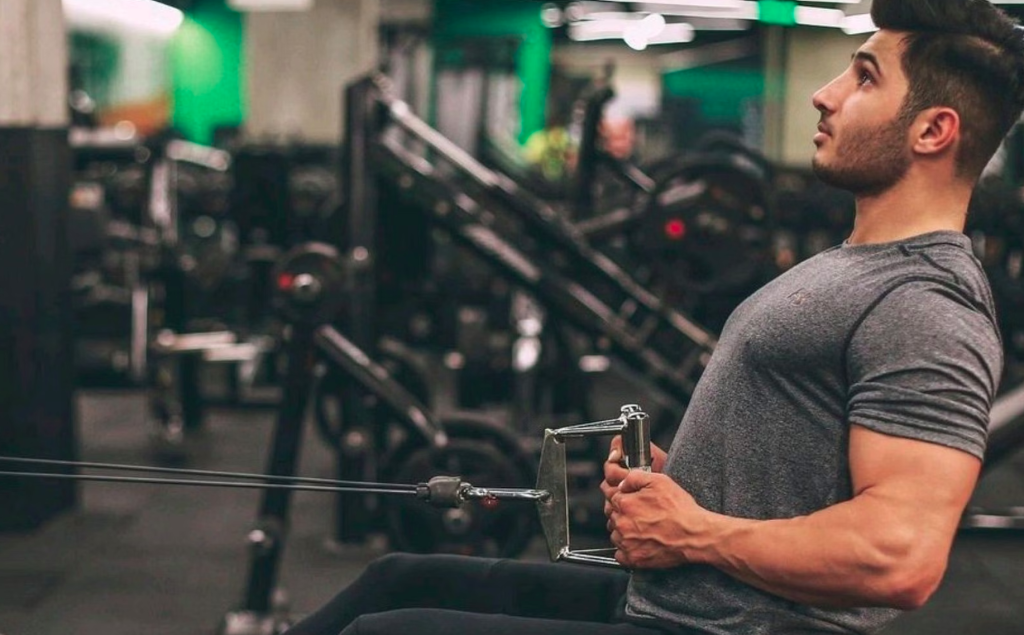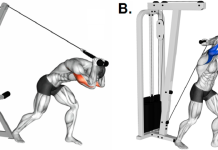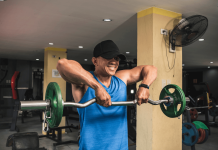The Ultimate Guide to Back Cable Workouts
When it comes to building a strong and well-defined back, cable workouts are a game-changer. In this comprehensive guide, we’ll explore the world of back cable workouts, uncovering the benefits, various types of cable machines, and the correct form and technique. Whether you’re new to cable exercises or looking to elevate your back training, this guide has you covered.
Back Cable Workouts
Back cable workouts have gained popularity in recent years for their ability to provide targeted muscle engagement and functional strength. These exercises involve the use of cable machines, which offer constant resistance throughout the movement, making them ideal for sculpting a powerful back.

Key Points:
- Cable workouts offer precise muscle targeting for back development.
- Cable machines provide versatile training options.
- This guide will walk you through the essentials of effective back-cable workouts.
Benefits of Back Cable Workouts
Before we dive into the specifics of back cable exercises, let’s understand why they should be a staple in your fitness routine.
Muscle Engagement
One of the primary advantages of cable workouts is their exceptional ability to engage multiple muscles in the back simultaneously. The key muscles worked during these exercises include:
- Latissimus Dorsi (Lats): The lat muscles, located on either side of your back, are responsible for the broad and V-shaped appearance of your upper body.
- Rhomboids: These muscles are situated between your shoulder blades and play a crucial role in maintaining proper posture and shoulder stability.
- Trapezius (Traps): The trapezius muscles run along the upper and mid-back and are involved in various upper body movements.
Functional Strength
While aesthetics are certainly a benefit, cable workouts also contribute to functional strength. Strengthening the muscles in your back enhances your ability to perform everyday tasks, from lifting objects to maintaining a healthy posture.
Versatility
Cable machines come in various configurations, each catering to specific back muscles and exercise variations. This versatility allows you to customize your workouts to target your unique fitness goals.
Types of Cable Machines
To make the most of back cable workouts, it’s essential to understand the different types of cable machines available at your disposal. Each machine offers a unique range of exercises and targets specific areas of your back.
Lat Pulldown Machine
Muscles Targeted: Latissimus dorsi (lats) primarily, with engagement from the biceps, rear deltoids, and upper traps.
Exercise Highlights: The lat pulldown machine is your go-to choice for developing wide, powerful lats. It allows you to perform exercises like wide-grip pulldowns, close-grip pulldowns, and behind-the-neck pulldowns, offering versatility in your training.
Cable Rows Machine
Muscles Targeted: Rhomboids, mid-back muscles, and upper traps.
Exercise Highlights: The cable rows machine excels in targeting the mid-back and rhomboid muscles. Exercises such as seated cable rows and bent-over cable rows help improve posture, shoulder stability, and mid-back strength.
Cable Face Pull Machine
Muscles Targeted: Rear deltoids, trapezius (traps), and rotator cuff muscles.
Exercise Highlights: Cable face pulls are essential for developing the often-neglected rear deltoids and upper traps. These exercises promote balanced shoulder development and better posture.
Understanding the capabilities of each machine allows you to tailor your workouts to your specific goals. Whether you want to widen your lats, strengthen your mid-back, or enhance your posture, cable machines offer the versatility you need.
Form and Technique
To ensure the effectiveness of your back cable workouts and prevent injury, it’s crucial to maintain proper form and technique. Let’s delve into the specifics of form for each of the three main cable exercises.
Lat Pulldown:
- Grip: Use a wide, overhand grip for wide-grip pulldowns and a close, underhand grip for close-grip pulldowns.
- Posture: Sit with your thighs snugly under the pads, keeping your back straight and chest up.
- Pulling Motion: Pull the bar down smoothly, leading with your elbows and squeezing your lats at the bottom of the movement.
- Breathing: Inhale as you extend your arms and exhale as you pull the bar down.
Cable Rows:
- Grip: Grasp the handles with a neutral grip (palms facing each other) and keep your wrists straight.
- Posture: Sit with your back straight, chest up, and knees slightly bent.
- Pulling Motion: Pull the handles towards your abdomen, squeezing your shoulder blades together at the end of the movement.
- Breathing: Inhale as you extend your arms and exhale as you pull the handles.
Cable Face Pulls:
- Grip: Use a rope attachment with a neutral grip, holding one end in each hand.
- Posture: Stand with your feet shoulder-width apart, maintaining an upright posture.
- Pulling Motion: Pull the rope towards your face while keeping your elbows high and wide. Focus on squeezing your rear deltoids.
- Breathing: Inhale as you extend your arms and exhale as you pull the rope.
Sample Back Cable Workout Routine
To help you get started with your back cable workouts, here’s a sample routine that incorporates exercises using different cable machines. This workout is designed to provide a balanced and effective training session for your back muscles.
Exercise: Back Cable Workout
Sets: 3-4
Repetitions: 10-12
Rest Between Sets: 60-90 seconds
- Lat Pulldown (Wide-Grip):
- Sit at the lat pulldown machine with a wide, overhand grip.
- Perform 3 sets of 10-12 repetitions.
- Focus on engaging your lats throughout the movement.
- Cable Rows (Neutral Grip):
- Use the cable rows machine with a neutral grip handle.
- Complete 3 sets of 10-12 repetitions.
- Concentrate on squeezing your shoulder blades together.
- Cable Face Pulls:
- Stand in front of the cable face pull machine with a rope attachment.
- Execute 3 sets of 10-12 repetitions.
- Emphasize pulling the rope towards your face to target the rear deltoids and traps.
- Optional: Superset or Drop Set
- For an extra challenge, consider incorporating a superset (performing two exercises back-to-back) or a drop set (reducing the weight and continuing after muscle failure) with any of the above exercises.
Cool Down: Finish your workout with stretching exercises for your back, shoulders, and arms. Stretching helps improve flexibility, reduce muscle soreness, and enhance recovery.
This sample routine provides a balanced approach to back cable workouts, targeting various muscle groups within your back. It’s essential to start with a weight that challenges you while maintaining proper form. As you progress, you can gradually increase the resistance.
Advanced Cable Workouts
Once you’ve established a strong foundation in your back cable workouts, you may want to explore advanced exercises to further challenge your muscles and continue your progress. Here are some advanced cable exercises to consider:
- Single-Arm Lat Pulldowns: Perform lat pulldowns one arm at a time to isolate and strengthen each lat muscle individually.
- T-Bar Rows with a V-Bar Handle: Use a V-bar handle to perform cable T-bar rows, which target the mid-back and lats effectively.
- Cable Pullovers: Attach a rope handle to the high pulley of the cable machine and perform pullovers to enhance the stretch and engagement of your lats.
- Face Pull Variations: Experiment with different face pull variations, such as using a wider or narrower grip, to target specific areas of your rear deltoids and traps.
These advanced exercises can add variety to your workouts and help you break through plateaus in your back development.




